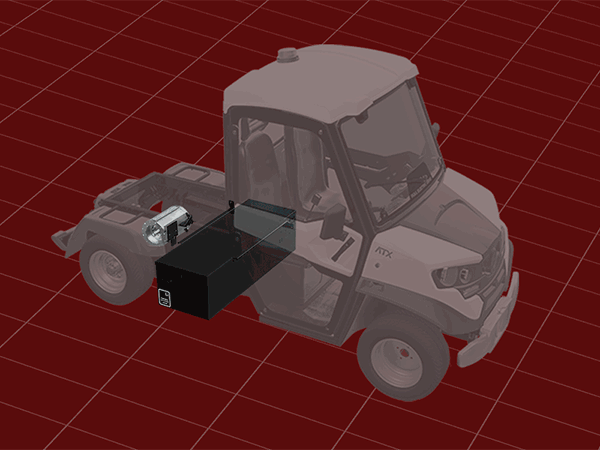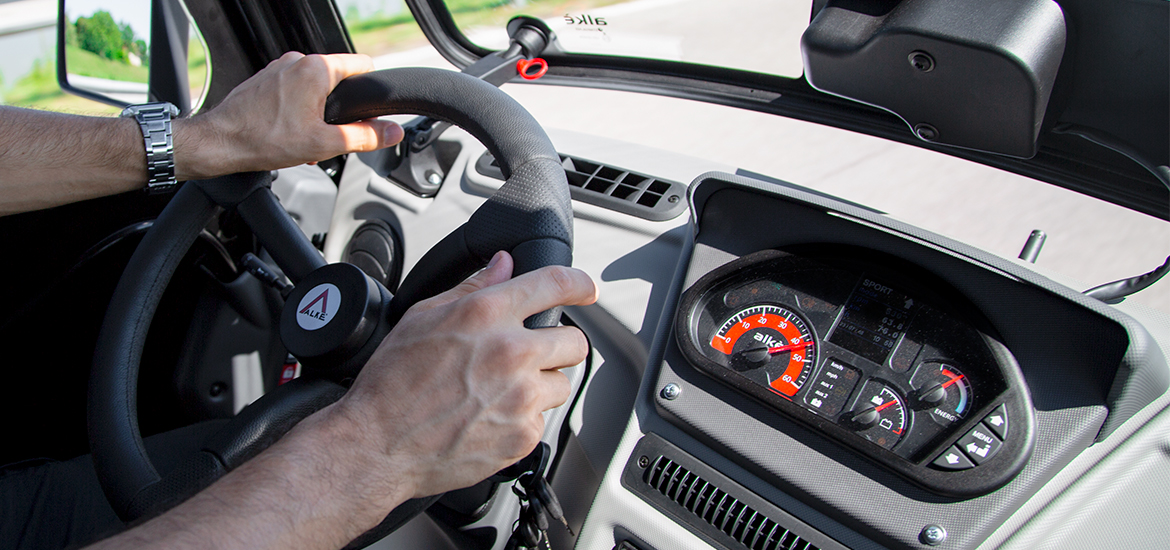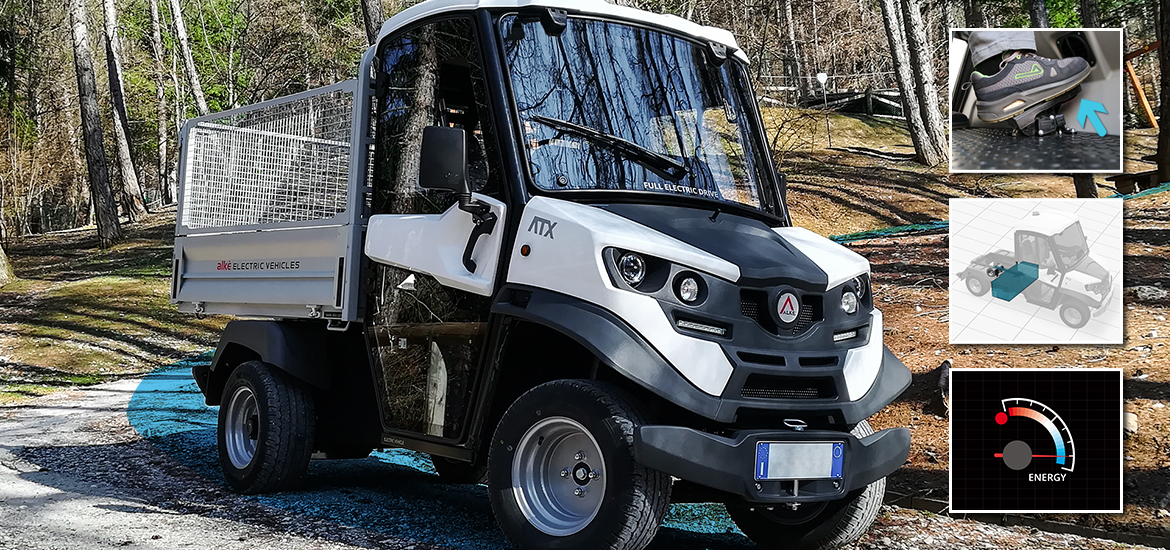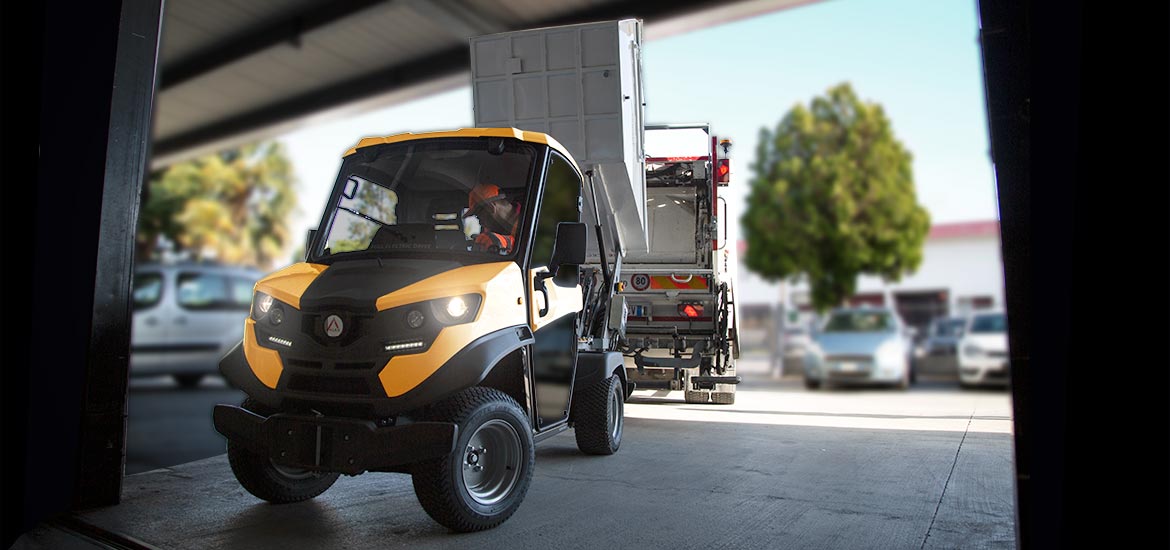

What is the regenerative braking system?
Discover how it works and which are the benefits of this technological innovation for electric vehicles and electric cars.
Advantages of an electric vehicle with regenerative braking system
- Savings of around 30% in energy consumption
- Increased battery autonomy
- Ideal for activities with frequent stop and go
- Zero consumption even with the vehicle stopped but turned on
- Maximum efficiency as the electric motor has Maximum torque at zero rpm

How regenerative braking system works
For many years Alke' has studied the behavior of electric vehicles during the braking energy recovery phase, this is the result of many test sessions analyzed with the innovative Cloud system for Alke' electric vehicles.
There are different type of electric motors, Alkè electric vehicles use special electric motors with a maximum power of 14 kW of the latest generation, which during normal operation receive electricity from the batteries. During braking operation the same motor works as a dynamo and generates energy that, instead of being wasted in heat from brakes, is sent to the drive batteries. This makes possible for the electric vehicle to get lower average consumption and consequently higher autonomy. Different studies have been made by universities to understand which is the real benefit of this innovation and it is estimated that you can get a maximum saving of about 30%. This value is reached especially in work situations of stop and go type typical of waste collection, linen collection, park maintenance, in the presence of differences in level and in urban use when the path is continuous parts and brakes.

Regenerative braking system during downhill
The regenerative braking system, as well as during activities characterized by frequent stop and go, is extremely efficient even in downhill. In downhill it is advisable to decelerate by releasing the accelerator pedal using the brakes as little as possible so as to make the most of the regenerative braking system. Basically during the downhill the motor runs "upside down" supplying energy to the battery.

Comparison between waste collection electric vehicles with regenerative braking system and diesel/petrol vehicles
To explain better how the regenerative braking works we make a practical example comparing waste collection with ATX electric vehicles with regenerative braking and diesel/petrol vehicles. If we use a petrol or diesel vehicle for waste collection we have a series of waste: the vehicle consume and pollute even when it is stationary during the load of waste; at each stop (about every twenty metres) the vehicle brakes and loses energy besides having a high brake wear; the traditional vehicle at the start isn't in torque so the engine haven't a good energy efficiency; the vehicle makes a lot of noise and therefore cannot be used during the night in the residences or tourist villages.
If we use an electric vehicle with regenerative braking system: the stationary electric vehicle doesn't consume, doesn't pollute and it runs silent; during the braking recovers most of the energy so it recharges the batteries; during the start, the Alke' electric motor has maximum torque at zero rpm then it has also the maximum efficiency. n such situations you can then reach a saving of about 30% with the regenerative braking system increasing in proportion the batteries autonomy.

